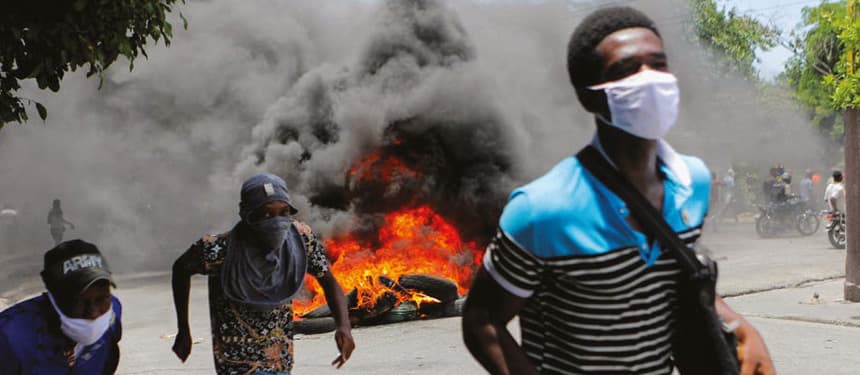Evacuations amidst gang violence and insurrection in Haiti
Heavily armed gangs launched significant attacks on two of the largest prisons in Port-au-Prince, Haiti, between 2 - 3 March, resulting in the escape of over 4,700 prisoners. This event marked the beginning of a significant increase in violent criminal activity in what was already an extreme operating environment.
Once a State of Emergency was declared, all international airlines suspended flight services indefinitely. Simultaneously, checkpoints and blockades were erected by criminals, while crowds made up of police and vigilantes hindered any attempt to move via roadways. The proactive decision-making of the Healix GSOC (Global Security Operations Centre) in the immediate aftermath of these attacks ensured that our team was able to safely evacuate numerous groups that had requested assistance within a 72-hour window of our “Notice to Move” protocol
-
272dedicated IMT hours
-
7vehicles used
-
865miles travelled

Challenge
Healix was closely monitoring activity in-country based on a set of tailored escalation triggers and was able to rapidly alert our clients to any developments. In fact, Healix issued a Level 4 alert for Haiti nearly a month before the escalation amid reports of an attempted coup.
Before the first request for assistance was received, Healix began exploring evacuation options with our teams on the ground and securing necessary resources. The situation was complicated as the gangs were actively working to take control of critical supplies, including gasoline and water. Operations at all airports were suspended, and the ports remained contested territory as gangs attempted to control and seize international aid. Gangs also established checkpoints across Port-au-Prince to maintain territorial dominance, leveraging their entrenched control of the capital to launch a new wave of attacks on police stations, prisons, and supply caches.
We soon received multiple evacuation and security assistance requests from clients in Cap Haitien and Port-au-Prince. The rapid increase of gunfire in public locations and gang-established checkpoints, particularly in areas once considered to be relatively safe, increased the risks associated with any attempt at movement. Our team delivered shelter in place plans, making sure that all of our clients had enough supplies for two weeks as we worked to secure transport options.
Approach
To manage this complex and rapidly evolving situation, our analysts maintained a database of Priority Information Requirements (PIRs). These PIRs included critical updates on variables such as the status of border crossings, checkpoints and flashpoints of gang activity. It also included live mapping designed to ensure our operations were planned and conducted using the most up-to-date intelligence.
We successfully worked with teams on the ground to coordinate several overland evacuations. This was only possible because of our proactive approach, which prepared intelligence and operational considerations in advance.
Outcome
The Healix team remained in constant communication with the evacuees and respective points of contact throughout the duration of the evacuation.
Our Haitian ground team collected our clients and safely delivered them to the border crossing point for a smooth handover to the team in the Dominican Republic, who drove them south to Santo Domingo.
We determined early on that the risks associated with air moves were too high; criminal groups were expecting the arrival of ex-prime minister Ariel Henry and were prepared to meet incoming aircraft with gunfire.
In addition, the operational and administrational environment made it difficult to ascertain whether air options were logistically or lawfully feasible. As a result, ground moves were deemed the most viable option. Organisations that chose to pursue air evacuations ultimately left their clients waiting days, if not weeks.
This case required a tremendous amount of effort from our teams across the globe. We had 13 team members working tirelessly on the ground in Haiti. A total of 272 dedicated IMT hours and seven vehicles were used to transport our clients 865 miles to safety. All Healix evacuations were concluded by 18 March, among the most efficient in the industry.